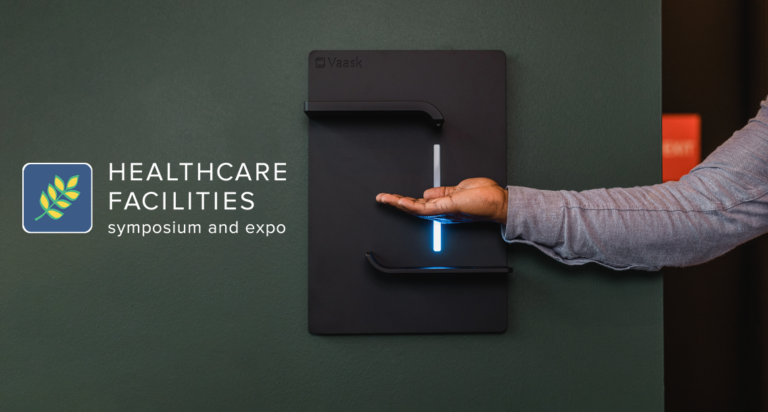
The trouble with T-zones: We can’t stop touching them
Jon Olsen | Vaask Founder If you’re reading this, chances are you’re touching one of the germiest objects in your home or office: your keyboard or phone. And it’s also likely that before the next time you wash your hands, you’ll touch your T-zone. What on earth is the T-zone, you ask? It’s the term that infectious disease researchers use for those features of our face where infection gains easy entry: our eyes, nose and mouth. Studies show we can’t keep our fingers off them, which certainly helps explain how 80% of illnesses are spread through our hands. It also reinforces the vital importance of keeping them clean, especially as we enter the flu, cold and COVID season, or FCC, as we call it at Vaask — not to mention RSV. By the numbers It takes only a brief review of germ populations and human habits to understand why we humans are so susceptible to whatever’s “going around.” For one thing, our cellphones, which we’re constantly touching, are said to harbor more than 17,000 bacteria per square inch. Our computer keyboards are also breeding grounds for germs. Desktops themselves have been famously found to have 400 times more bacteria than the average toilet seat. And while some of those bacteria aren’t ordinarily harmful, others are the kind that nobody wants to come into contact with, including COVID-19 and MRSA. And then there’s doorknobs, handles, touch screens, elevator buttons, stair railings — you get the picture. Germs are everywhere, and when you multiply their numbers by the more than 60 times an hour that the average person touches their T-zone, it’s obvious that we’ve got a problem. We’re constantly at risk of infecting ourselves with something nasty. Too much face time Why are we all so hooked on touching our face? Can’t we just stop? Apparently not. Since early childhood, we’ve learned to touch our eyes, nose and mouth on demand. It’s how we show we know the meaning of the words, after all. Researchers have found it can work as a stress reliever — an adult method of self-soothing, perhaps, that works in the same way as thumb-sucking does for many babies. Like thumb-sucking, face-touching is a habit that starts when we’re in the womb. It’s in our DNA — primates do it, too. And while gorillas and chimpanzees may think nothing of it, we humans now know better. We have been educated since early in the COVID-19 pandemic to the fact that the mucous membranes in our eyes, nose and mouth serve as perfect conduits for all sorts of viruses. The late infectious disease researcher Mary-Louise McLaws was renowned for her studies on the frequency of face-touching, especially of the T-zone entryways. She found that people have no idea how frequently they bring their hand to their face: “We rub our eyes, scratch our nose, touch our mouth,” McLaws told The New York Times, creating ample opportunity for viruses to enter our bodies. People need to be aware of how often they do it, she said, and try to limit the frequency. Touch the forehead or an ear instead. Unfortunately, that’s easier said than done. Despite knowing how it’s likely to make us sick, touching our T-zone is a tough, if not impossible, habit to break. Even medical students can’t stop themselves. In one study, they did it as frequently as 23 times an hour. And anecdotal reports suggest that thinking about stopping can actually have the opposite effect. So what’s the answer? From a young age, we’ve all been taught not to touch things that can hurt us or easily break: a hot burner, an electrical outlet, Granddad’s favorite glass decanter. It might be time to start adding “T-zone” to that list. But for those of us who are stuck in our face-touching ways, the answer is twofold: First, stay away from those mucous membranes whenever possible. Touch your cheek, your forehead or your chin instead — anywhere but the T-zone, in other words. And keep a clean tissue handy for the times when you have to touch those areas. Secondly — and more importantly — we all need to practice good hand hygiene. That means washing our hands with soap and water for 20 seconds. But given that researchers have found only 9% of people actually meet the standards set by the Centers for Disease Control and Prevention when it comes to using soap and water, compared to 84% of people who properly sanitize their hands, it may be even better to use a 60% alcohol-based sanitizer like Vaask’s Island Citrus moisturizing sanitizer gel. That’s especially true in high-touch areas. Remember, all those doorknobs, handles, buttons and touch screens are precisely the kinds of surfaces where viruses can survive the longest (outside of us, that is). That’s why it’s so vital that we sanitize before and after touching them. If we can all do better at both keeping our hands clean and limiting our T-zone touching, then — fingers crossed — we might just be able to gain the upper hand against germs. Interested in a generous sample of Vaask’s Island Citrus sanitizer gel? Sign up here.














